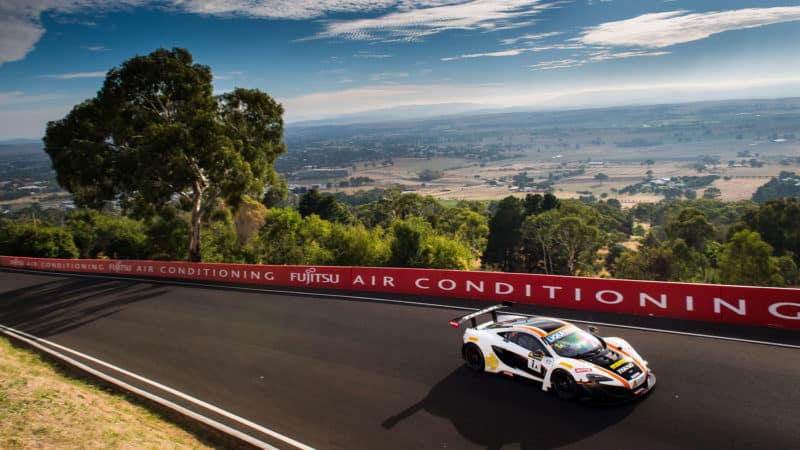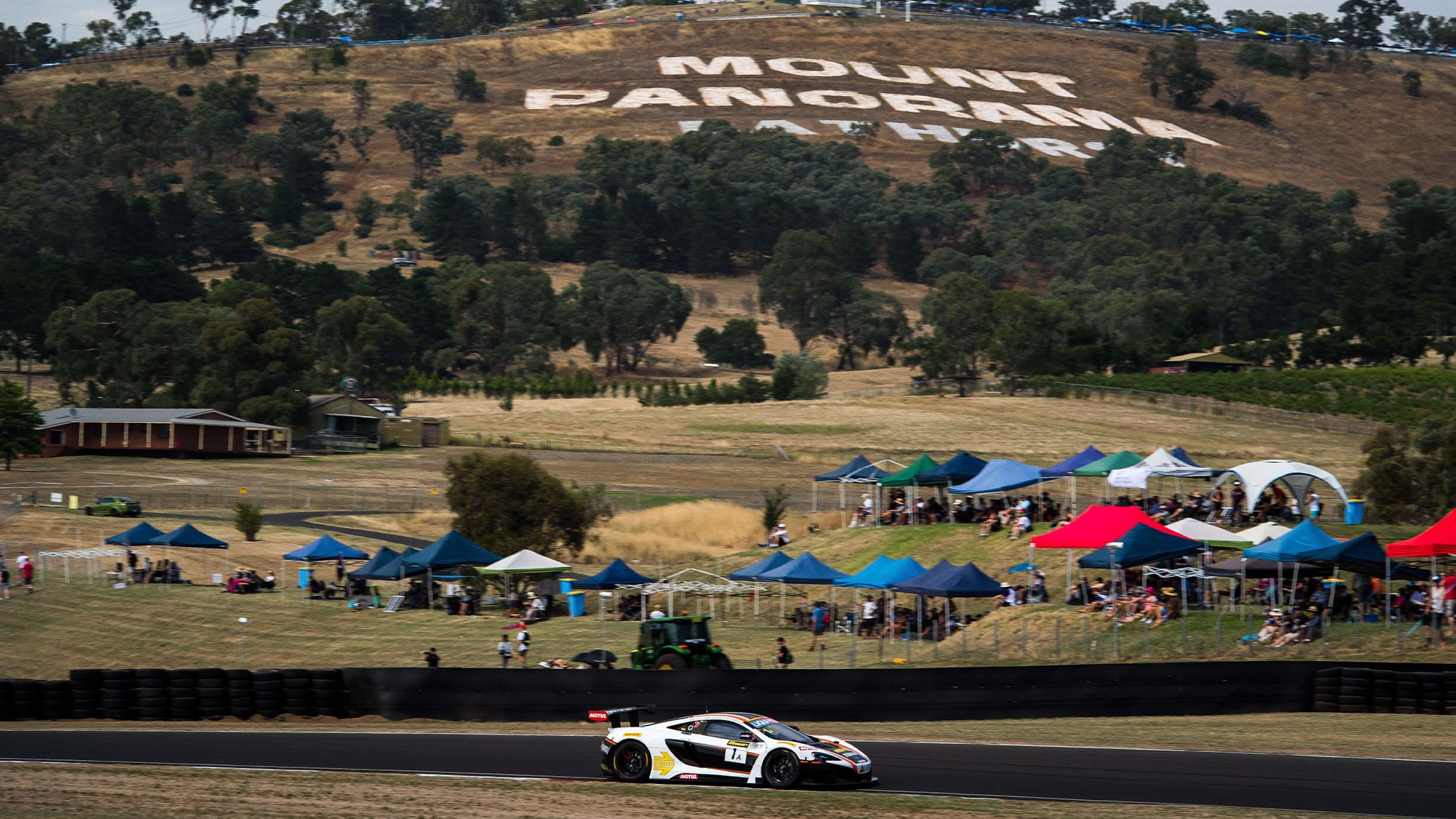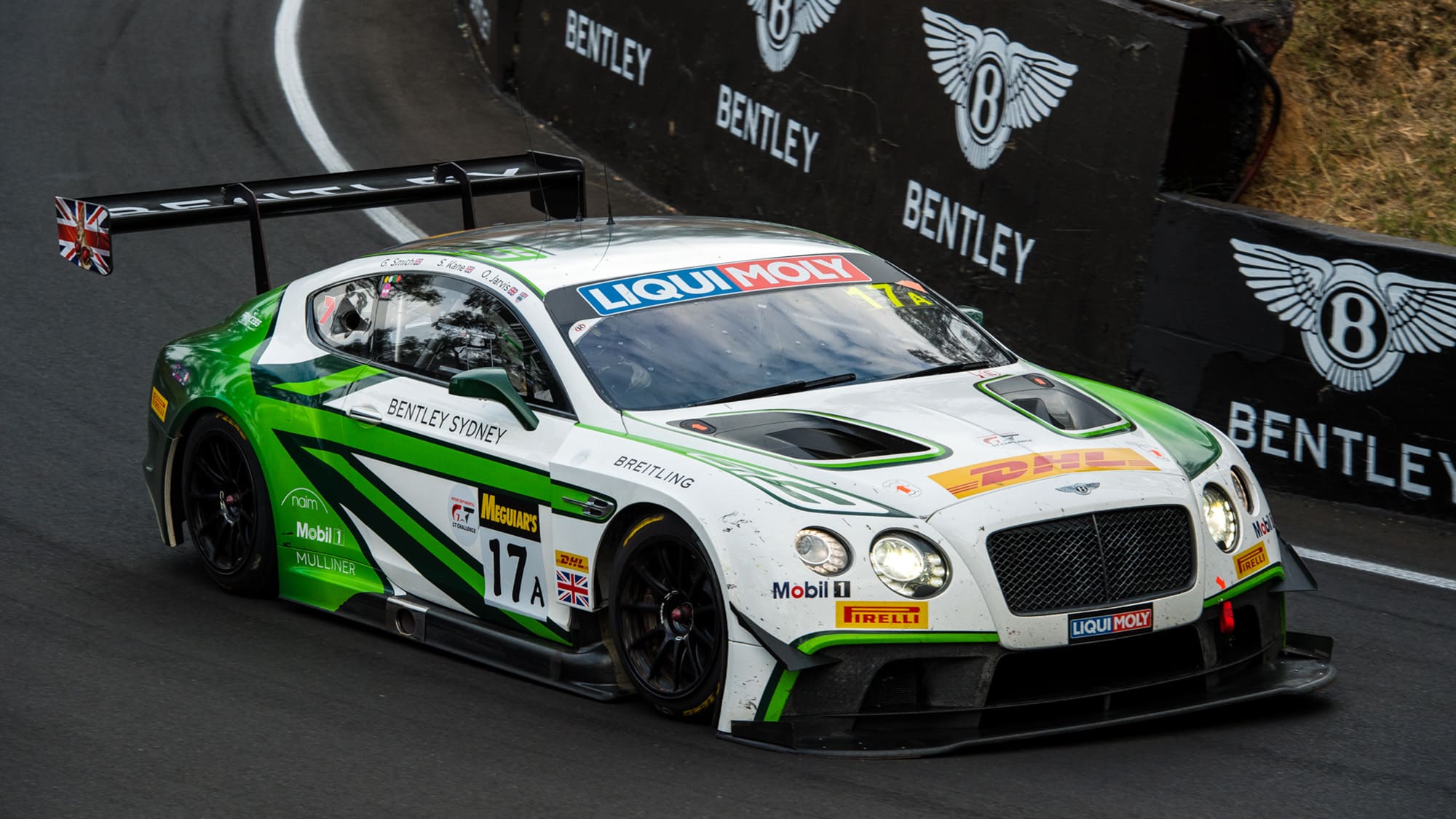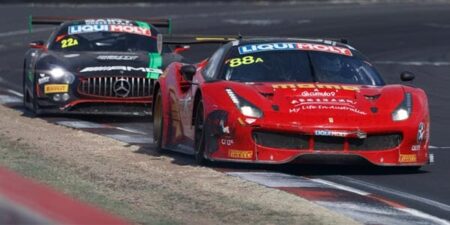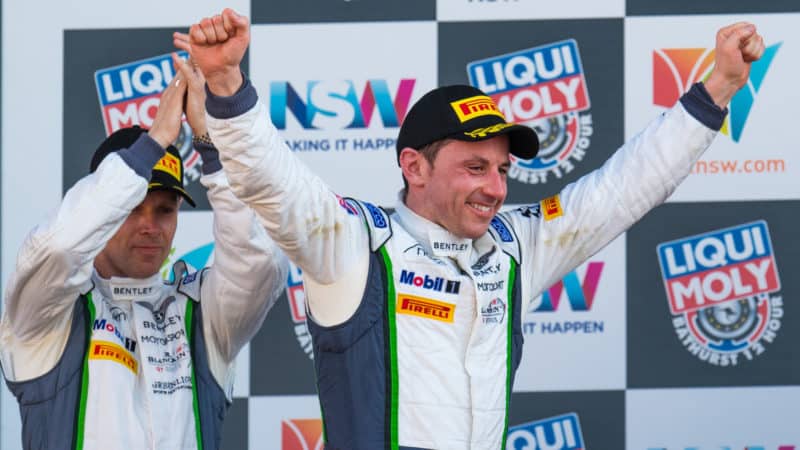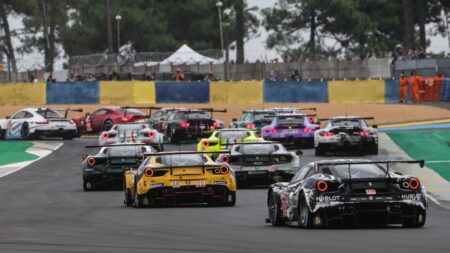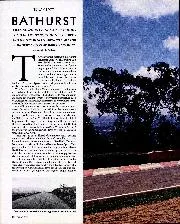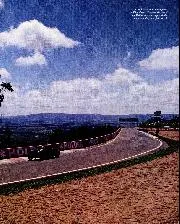And then there was the heat: Even by the standards of an Australian summer Bathurst was hot and this was going to be by some margin the warmest 12-hour race yet held. On Saturday it hit 39 degC in the shade, over 50 deg on the track and goodness know what inside fireproof underwear, triple-layer Nomex and a Continental GT with a twin-turbo V8 in front of you radiating heat back into the cockpit. As Soulet was to find out in the race, even air-conditioning and air pumped direct into the driver’s helmet was often not enough to keep body temperature under control during the race.
To try to understand better what the drivers faced, I hitched a lift around the track with Cogdell between qualifying sessions. The tone for the lap is set by a first turn simply called Hell Corner. Nothing if not direct, these Australians. By the standard of what’s to come it’s actually quite straightforward, but the appropriately entitled Mountain Straight it introduces is the steepest I’ve come across so if your exit is not perfect, your lap can be over in the first 10 seconds. And then you’re on the mountain, which I can equate only to sitting on a rollercoaster going through a tunnel. The run-off areas make the Nordschleife look like Silverstone, the gradient turns Laguna Seca into the Norfolk Broads. The Dipper, where Stippler crashed, is like driving off a cliff. Even the famed Conrod Straight allows little time for relaxation as it has an enormous crest in the middle and a 170mph kink – proudly billed as Australia’s fastest corner – at its end.
The fans congregate mainly on the mountain where you need no special passes to get within a few feet of the cars. Photographers go closer still, sitting on a low retaining wall above the track with no physical barrier between them and the GT3s flying past on, and frequently over the limit. Here, 10,000 miles away on the other side of the world, is a taste of what racing must have been like at the more spectator-friendly circuits in the UK 50 or 60 years ago. And, contrary to everything I had been told to expect, this was the most civilised crowd you’ll find this side of the Goodwood Revival. I spent hours walking around soaking it all up and didn’t spot a single person who looked like they might even be on the way to getting drunk. Instead they stood in the sweltering heat, crowded around the loudspeakers so they could hear the commentary, and watched their heroes race. The event started in pitch darkness at 5.45am but I was there with them by dawn, and to see the sun come up over that scene was one of the most profound experiences I’ve had as a spectator at a motor race.
“Give Guy a car and you’ll always get it back again.”
Smith started the race. He always does. He hates starting but is very good at it. The field streaked away, affording the eerie sight of a hundred high intensity headlights in the distance picking their way around the mountain. An order established itself but only for a few minutes. On lap four the fifth-placed Bentley was in the pits with a puncture. Soulet had hit the wall and two hours later the true consequences were revealed as a damaged wheel bearing failed, after which a more detailed examination highlighted the need to change the entire rear corner. It only took six laps of a track with a lap time of little more than two minutes, but it’s enough: with 10 hours remaining, all chances of a memorable result had already gone.
In the meantime Smith had his encounter with the Audi and escaped with only scrapes down the side of the Bentley. “That’s why we have Guy,” says Gush with feeling. “Give him a car and you’ll always get it back again.”
And he’s quick, too. Without fuss or risk in one extraordinary double stint, he dragged the Bentley from 23rd on the grid through the field. When he came in to hand over to Jarvis, a car that should probably be lying wrecked at the top of the mountain was in second place.
From there the race ebbed and flowed with different drivers on different strategies. BMW, for all its phenomenal qualifying pace, would be nowhere. The M6s were fast but fragile and its drivers made too many mistakes. But van Gisbergen’s AMG, which didn’t even make the top 10 in qualifying, muscled its way to the front to the sound of much muttering about sand-bagging from other crews. Mercedes had provided the course cars for this event, taken over the entire top floor of the trackside Rydges Hotel and brought hundreds of valued guests from all over the continent. Van Gisbergen was the man of the moment, the fastest Antipodean in GT3 racing and they’d come to see him deliver for Mercedes.
But he’d have to deal with the Ferrari first. Because the circuit has both long straights and tight turns, set-up is always a compromise: the AMG is a downforce monster and therefore whip-crack fast around the mountain, but also by far the slowest of the front-runners down the straight.
The race ground on. Gush’s safety car predictions were coming true: we were averaging more than one per hour as the mountain claimed driver after driver, the dead car car-park already brimming by early afternoon. What was causing the attrition? The circuit, the need to stay on the lead lap and, of course, the heat.
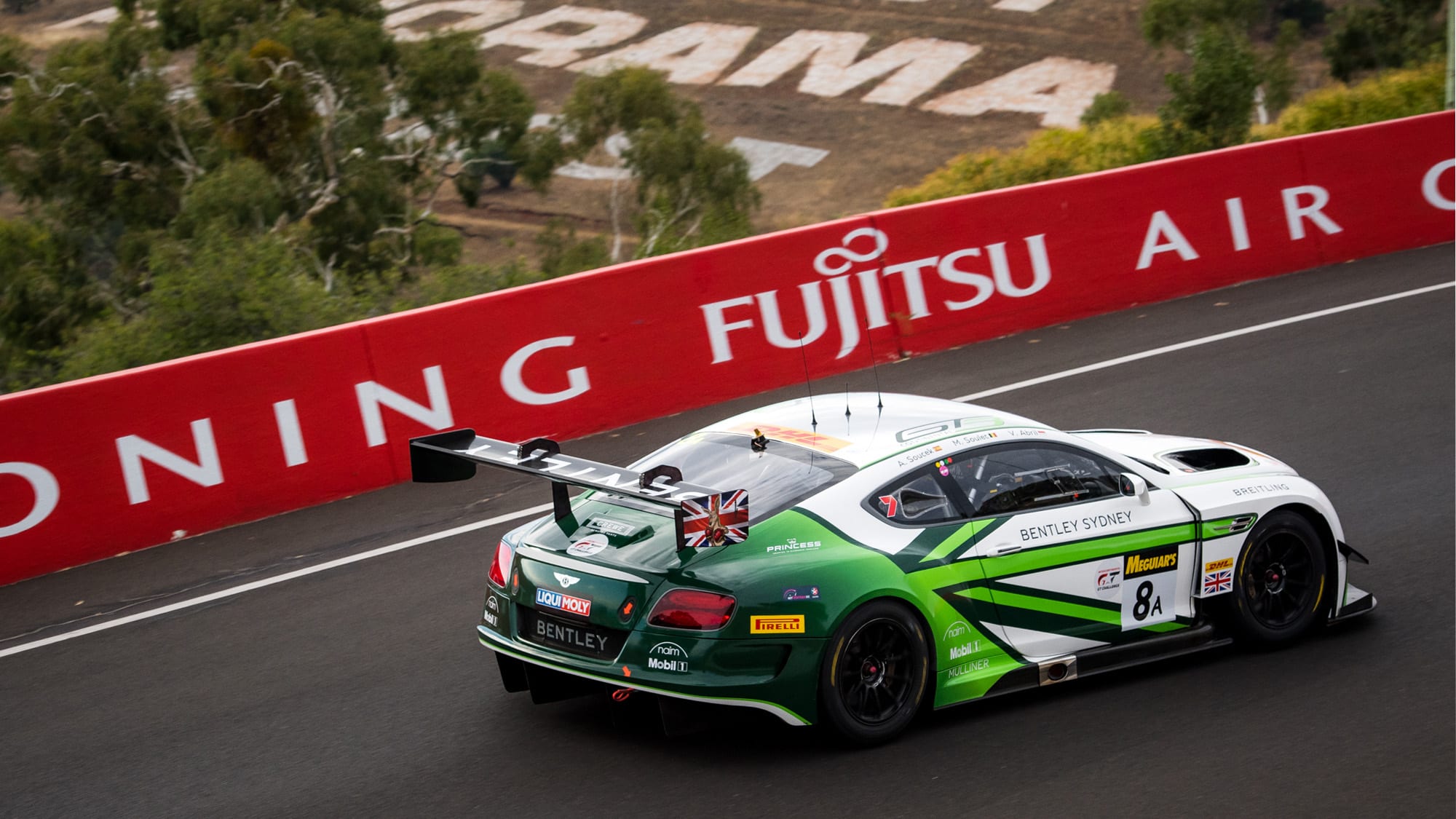
Soulet came on the radio. Towards the end of a hellish double stint in the hottest part of the day, he could not continue. The Bentley came in, M-Sport leapt into action and Soulet half-staggered and was half-carried to a chair to be covered immediately covered in cold towels. He could scarcely communicate but managed to point to his right boot. The shoe came off and more towels were applied to where nothing other than vicious heat and his own sweat had scalded him. He would in time lose all the skin from the top of his foot. It was a while before he could even lift a bottle to his lips and, when he did, his hand shook it into a blur. I’ve not seen racing this raw before and found it shocking to see what drivers will put themselves through even when there’s nothing to fight for, and rather humbling too.
A scheduled pad and disc change dropped the Bentley down to eighth, but in this steel-brake formula others stopped too. And for a while in the afternoon, though separated by some laps in the race, on the circuit the two Bentleys led the field around the track. No car has endured greater change to become a GT3 racer and, while now lighter than a family hatch, it remains a physically immense presence around the svelte Ferraris and McLarens. I was reminded of the original Blower’s finest hour, when Tim Birkin improbably entered one of his stripped down leviathans into the 1930 French Grand Prix, coming home second only after the leading Bugatti elected to miss its final fuel stop to cross the line and win on fumes. Then and now the Bentleys look like hornets surrounded by flies.
But by the time Steven Kane took the helm for the final stint, it looked like the worst possible result was on the cards. Then the car stalled and lost 35 agonising seconds while it recycled its start procedure. They were going to come fourth. “Give me retiring from the lead over fourth every day of the week,” growled Gush. The Ferrari and AMG were just too far ahead and there was a 911 with superstar Lieb behind the wheel between the Bentley and the final podium place.
Still, if anyone can conjure something from nothing it is Kane, who recorded the car’s fastest lap of the race with less than an hour to go. He loves it here, says it should be on the bucket list of every proper racing driver and was showing us why. But the best hope lay in the belief that the Porsche would have to splash and dash before the end. It refuelled with 80 minutes to go and hadn’t looked like running that far on a tank all weekend.
Then with 30 minutes to go all hope evaporated as van Gisbergen punted another Porsche into the gravel. It had to be recovered, the 16th safety car period in this 12-hour race had to be declared and now Lieb could make it to the end without a problem. For the first time in almost a dozen hours, heads fell in the Bentley pits. In the queue behind the safety car the Ferrari led on new rubber with van Gisbergen on old tyres directly behind, then came the Porsche with many lapped cars to be overtaken between it and the Bentley. It was over.


